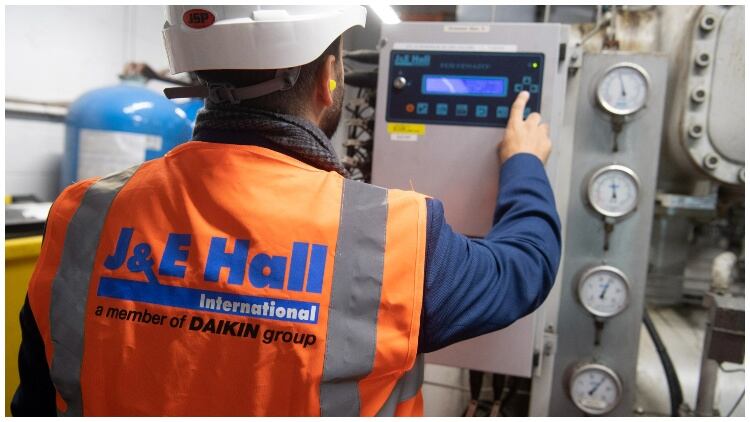Listeria – we’ve all heard of it and know how ill it can make you, but where exactly does it come from and why is it so bad? After all, a bit of muck never hurt anyone, right? Wrong!
In fact, while Listeriosis is rarely the cause of food poisoning compared to other food poisoning bacteria such as Campylobacter and E. coli, it is the cause more deaths in the UK than both of them put together.
Nearly all cases of Listeriosis in humans are a result of the species Listeria monocytogenes, which is known to have at least 13 different serotypes (or distinct variations). The majority of reported foodborne outbreaks have been caused by a serotype known as 4b.
Along with many other bacteria, you will commonly find it lurking around in soil, water and animal faeces, but what makes Listeria quite unique is that it can survive and grow in a wide range of conditions. Thriving in cold damp conditions, with or without oxygen, it continues to grow at temperatures as low as -1.5°C and while it will not grow in frozen foods, it still survives.
Typically, it is spread by eating contaminated foods, but mostly, ready-to-eat foods, such as salad and vegetables, cured meats like ham and bacon, dairy products, and also raw fish and meat. This means that over the years, a range of foods have been implicated in outbreaks, from sandwiches to mould ripened soft cheeses, cold smoked salmon and even frozen sweetcorn.
Listeria and frozen and chilled foods guidance
Historically, frozen vegetables hadn’t been represented as ‘ready to eat’ or ‘ready to defrost and eat’ foods. However, changing consumer behaviour towards healthy, on-the go, convenient meals has changed consumer perception, meaning that they now treat many frozen vegetables as if they are safe to eat without cooking.
It is for this reason – and following a foodborne outbreak of Listeria monocytogenes connected to frozen sweetcorn in 2018 – that the British Frozen Food Federation (BFFF) complemented its existing guidance with a ‘Guide to The Management of Risk of Listeriosis from Frozen Vegetables’. This was shortly followed by guidance from PROFEL, the European Association of Fruit and Vegetable Processing Industries which (after testing) concluded that frozen vegetables should be regarded as ‘non-ready to eat’ and subsequently recommended that clear cooking, defrosting and storage instructions be communicated to consumers and businesses alike.
For most people, Listeriosis may not be serious, but it can be a different story if you are classed as immunocompromised. Particularly vulnerable individuals include the older generation, pregnant women, infants less than three months old, people with uncontrolled diabetes and those who are auto immune.
The importance of refrigeration service and maintenance

In the food processing industry, refrigeration service and maintenance is a key element in production. J & E Hall develop planned maintenance programmes to help prevent many issues and remove much of the stress.
Forming partnerships with customers gives us a better understanding of the demands of site restrictions, allows for greater energy efficiencies and the end game of a more cost-effective production and cold storage operation. We service a wide range of systems, including those running on ammonia, HFCs, CO2 and hydrocarbons.
Unsafe cooling plant and inefficient refrigeration systems can lead to hygiene and health and safety issues. Refrigerants by their nature can be hazardous, so having engineers on call with an understanding of how to prevent these issues developing is critical.
At J & E Hall we understand refrigeration legislation compliance and work closely with our customers to ensure specific site requirements are met.
Find out more about refrigeration service and maintenance from J & E Hall here.
Beginning with flu-like symptoms, sometimes accompanied by nausea, vomiting and diarrhoea, many require hospitalisation – if left untreated, it can even lead to meningitis or sepsis.
But there is some good news – high temperatures will kill Listeria, so ensuring food is cooked to a high enough temperature for a sufficient length of time will ensure that any Listeria still present is destroyed. The Food Standards Agency (FSA) advises consumers to cook food until it is steaming hot and cooked throughout, but if you want to be more precise this means until the core of the food reaches at least 70°C for two minutes or equivalent.
Mitigating against Listeria with proper controls
But of course, many foods are ready to eat and wouldn’t require that further cook. This means that it is of critical importance that it is carefully managed and controlled in the production environment. All manufacturers must take all necessary steps to ensure that post processing contamination does not occur either before or during packing operations.
Businesses should have a technically competent individual with the responsibility and authority to manage Listeria controls. Being able to survive and grow in chilled conditions means Listeria will continue to grow in the food factory environment, such as in drains and free-standing water, unless good manufacturing/hygiene practices are in place. Therefore, standard HACCP principles should be applied regarding the nature of materials used, processes undertaken and customer handling of the product. Care of the use of water and water potability is also critical in controlling the presence of Listeria, as is ensuring the cleaning procedures and chemicals used are appropriate for Listeria control.
Commission Regulation (EC) No 2073/2005 defines the microbiological standards which foods must achieve with respect to specified pathogenic bacteria, including Listeria. These standards state that for those ‘ready to eat’ and ‘ready to defrost and eat’ foods which are able to support the growth of Listeria monocytogenes (excluding foods for infants or for special medical purposes), they should not exceed 100 colony forming units (cfu)/g or (cfu)/ml throughout their shelf life. However, if the food business cannot demonstrate this, then there must be an absence in 25g before the food has left their control.
If it ain’t broke don’t fix it: Listeria laws
There is no doubt that the combination of regulation and applying HACCP-based principles and good hygiene practices and controls, has contributed to the markedly lower rate of listeriosis here in the UK in comparison to Europe. In fact, comprehensive data on listeriosis collated over several years by the UK’s Chilled Food Association consistently shows rates to be around half that of Europe overall.

However, concern is growing across industry over recent EU proposals to change the EU Microbiological standards regulation 2073/2005. These changes would mean that businesses would have to carry out challenge testing of products in order to set their shelf lives. And if challenge testing isn’t carried out then Listeria would have to be non-detectable throughout the shelf life that is set.
While challenge testing may have its place, we are acutely aware that it does not necessarily reflect reality. Deliberately contaminating food with relevant microorganisms may give you a basic idea of issues that may arise during processing, distribution and storage; however, it cannot possibly take account of all the potential variations in product formulation during processing, or over the product’s life. Neither does it consider the hygiene controls in the food production environment.
Furthermore, challenge testing may drive increases in food waste due to a shorter shelf life, as well as higher costs, diversion of funding resources away from hygiene, and other critical food safety controls.
As we await the changes to the EU regulation, a consortium of industry representatives has been working together on a response, emphasising the effectiveness of UK’s approach and summarising how truly representative shelf lives should be set. The BFFF is a member of this group and would encourage both UK and EU industry colleagues alike to show support in stopping these potentially damaging regulatory changes.




